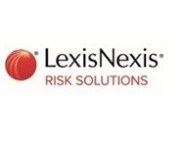The insurance industry and data science – what’s next?

youTalk-insurance recently caught up with Alan O’Loughlin, Director, Data Science at LexisNexis Risk Solutions to understand how new insurance insights emerge and whether data demands will change as an outcome of COVID-19:
Q: As a data and analytics provider to the insurance sector, you must have a vast team of data scientists?
A: It’s certainly growing!Globally we have over 130 people across various geographies including a large team in Ireland, and smaller teams in the UK and the rest of Europe. As the demand for analytically derived products increases, we’ll continue to grow in response to that demand.
Q: How is the team structured?
A: At a Junior level we try to be as agnostic as possible allowing the young Data Scientists to have a lot of exposure to the different types of challenges in data and statistical modelling. Everyone has at least a basic understanding of pricing and underwriting and knows how to assess the value of data. Then as our Data Scientists progress, they tend to develop specialist skills within the team (aligned to the wider company structure) where we have dedicated Motor, Home and Commercial teams. Motor is a major focus for us, and within that we have specialist teams supporting Telematics and Connected Car, and the LexisNexis® Vehicle Build products on top of our general motor product line support teams. To support some of the complexities of the home and commercial markets we also have a specialist Geospatial Analytics team.
Within the wider Data Science family, there are the operational GTM (go to market) specialists, who support customers and sales beyond Research and Development. This includes The Analytics Batch team which helps customers and prospects test our new products. The Attribute Development Team is responsible for operationalising thousands of new attributes each year for new and existing products. Finally, the Analytics Audit team is there to constantly look for process improvements across all of our product implementations. We manage hundreds of complex predictive models and tens of thousands of attributes on a daily basis. Implementing and maintaining the highest quality and consistency possible is vital to our business.
Q: Talk us through how a new data insight comes to market
A: When our colleagues in our Motor, Home or Commercial teams have a new concept, they ask us to validate the idea by building an analytical prototype with the appropriate data sources and outcomes. These ideas for new data solutions come from the constant dialogue we have with customers to help drive innovation, and to help solve the pain points they might have.
If the concept works and the market opportunity exists, we create the final specs for technology to implement. Before the final implementation, our attribute team is involved to create the attributes or inputs into the solution and our audit team works with technology to ensure the final product performs as expected.
While this development work is happening, a testing strategy is developed for our customers.We may create actionable insight studies or perform retro validations tests.The goal of this work is to demonstrate the value of our solution on the insurance provider’s own data.
As we get closer to product launch, we work with our product team to support our customers with any questions or required documents they need on the solution inputs, outputs and overall performance.Once the product is in production, we continue to work with customers to validate the solution.Finally, we monitor the attributes and scores to ensure they continue to perform as expected.
Q: What has been the most exciting development in the past year?
A: LexisNexis® Vehicle Build – this is a global solution to help motor insurance providers price using data on the presence and performance of in-car safety features down to the Vehicle Identification Number (VIN) level, that is being tested today. We were able to develop a robust product due to the high quality, advanced analytical work conducted by the team. They took the time to understand the intricate details associated with Advanced Driver Assistance System (ADAS) features and technology equipped on a given vehicle, and to normalise the many ways car manufacturers name these features. This product has uniquely positioned us to serve the needs of motor insurance providers, by enabling them to offer more accurate and fair pricing using data insights on how a specific vehicle is equipped.
Q: What’s on the Agenda for 2021?
A: It’s shaping up to be a very busy year. We have already launched three new solutions to the market.
LexisNexis® Emailage® Rapid is a powerful fraud risk scoring solution based on the email address and other information provided during the application process.
LexID® for Insurance is the unique identifier built from our proprietary linking technology and the vast amount of data resources (including insurance specific data) to match disparate identity information across multiple customer databases to help insurance providers create a single customer view. ‘Knowing the customer’ is heightening in importance with the FCA pricing regulations on the horizon and insurance providers are already seeing the benefits of using LexID to link their own data internally and at point of quote.
We have just launched new attributes for motor to help insurance providers understand changes in policies as a direct outcome of the first pandemic lockdowns. Many insurers are still trying to understand the impact of 2020 and Covid-19 on their risk modelling, with that vast drop in drivers on the road the question is “will 2022 look closer to 2020 or 2019 from a risk perspective?” We are trying to help insurers answer some of these questions.
As mentioned above, we also plan to bring in new data attributes for motor insurance providers related to the vehicle. This will build on the ADAS data attributes now being tested in the market, which hold a lot of promise in both pricing and claims.
Claims is also big area of focus through the creation of market-wide claims databases – first in home. Finally, geospatial analytics is an area we think will provide a number of new predictors into our modeling applications.
Trends and benchmark reporting have been under a spotlight with the impact of COVID-19, but we see this area expanding across the globe. Every insurance provider wants to learn more about how they are doing relative to their markets across the globe.
Q: Do you see any trends in the application of data from the IoT for insurance?
A: Yes absolutely, in fact we have partnered with several home IoT manufacturers in the U.S. to validate reductions in the severity and frequency of home insurance claims. With more people at home during the pandemic, the severity of home insurance claims has reduced. If someone is home to shut off the water when an IoT escape of water alarm goes off, it can stop an insurance claim becoming very expensive.
The key challenge is gathering enough performance or claims data to validate the value of any individual IoT device. It takes time for a device to become widely adopted and the data centrally collected. Once that happens, there will be a need to standardise and normalise the data to make it meaningful for insurance and beneficial for customers. The good news is we have been in this business with telematics devices for many years and we have extensive experience creating device generated attributes and scores.
Q: Are there specific data trends you see emerging through the Covid19 pandemic in terms of how insurers can prepare for future risks around pandemics?
A: Globally, we’ve seen some changes in behaviours on our roads, with traffic volumes yet to fully return to normal. While the total number of claims has dropped we have seen a spike in the number of speeding events, which is correlated to the spike in fatalities we’ve seen on our roads.
The biggest trend is how it has put insurance providers under pressure to service customers virtually – from application through to claim. Prefill solutions, data driven underwriting, pricing applications, and contactless claims processing have all played a part in keeping the insurance wheels turning.
Fortunately, we have been developing these solutions for years so we are in a good place to help insurance providers interact effectively with their customers and also understand how risks have changed as a direct consequence of the pandemic.
About LexisNexis
At LexisNexis Risk Solutions, we believe in the power of data and advanced analytics for better risk management.
With over 40 years of expertise, we are the trusted data analytics provider for organisations seeking actionable insights to manage risks and improve results while upholding the highest standards for security and privacy.
We enable insurers and brokers to improve decision-making, increase profitability and transform business performance with actionable insights from our data and analytics solutions. For more information, please contact risk.lexisnexis.co.uk/insurance or enquiries-info@lexisnexis.co.uk.

